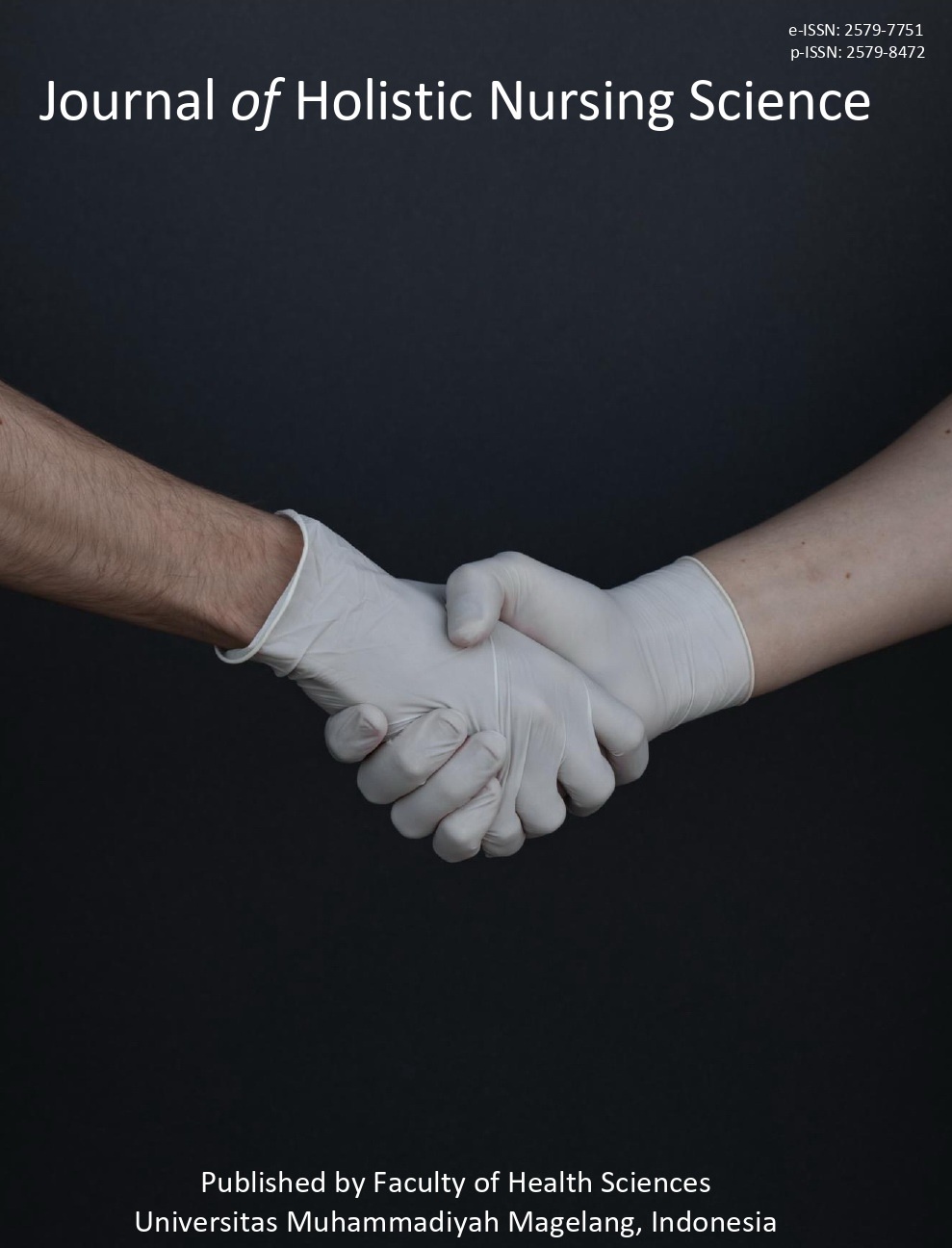EFEKTIVITAS PENERAPAN BEDSIDE INTERPROFESSIONAL ROUNDS (BIR) UNTUK MENINGKATKAN HUBUNGAN INTERPERSONAL PERAWAT DAN DOKTER
Main Article Content
Abstract
Effective teamwork affects job satisfaction so as to improve outcomes in health care in clinical practice. Interpersonal relationship between nurse and phsycian is one of interpersonal relationship that takes place in hospital work environment. Form of interpersonal relationship between nurse and phsycian can be seen from the relationship of collaboration in providing care to the patient during the care. Bedside Interperprofessional Rounds (BIR) is one method to improve collaboration between nurses and phsycian in addition to patient beds that aim to communicate, coordinate, make joint decisions and take responsibility in the care of patients during hospitalization. Implementation of appropriate and effective collaborative methods is an effort that can be used in order to improve interaction between professionals in the work environment Hospital. This study aims to prove the effectiveness of the application of Bedside Interprofessional Rounds (BIR) to improve interpersonal relationships between nurses and phsycian. The research design used was quasi experimental with pre-post test design with control group. The sample size was 20 respondents in the control group and 20 respondents in the intervention group were taken with the sampling consecutive sampling technique. The results of this study indicate that the application of Bedside Interprofessional Rounds (BIR) can improve the interpersonal relationship between nurses and phsycian.
Downloads
Article Details
Authors who publish their articles in JHNS retain full copyright of their work. JHNS does not require authors to transfer their copyright to the journal or Universitas Muhammadiyah Magelang as the publisher. The authors grant JHNS a license for the first publication.
